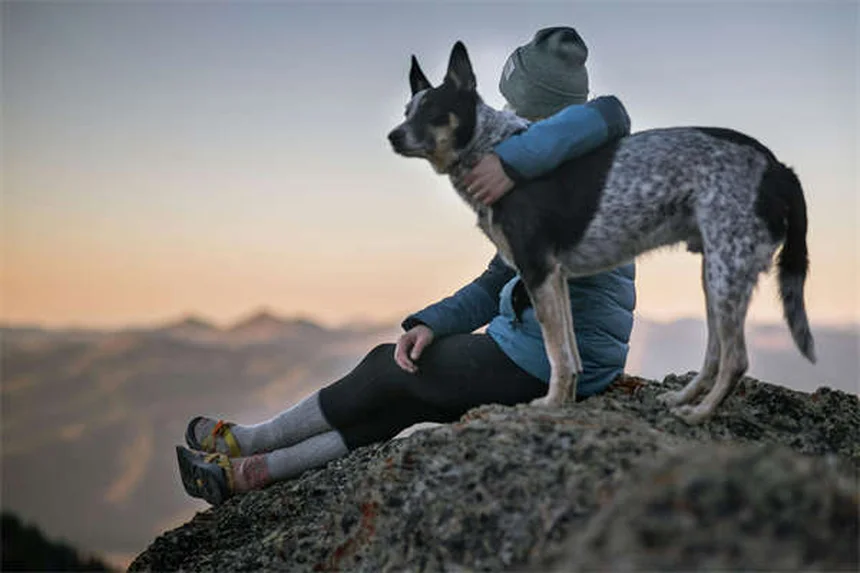Worried about that mysterious lump on your chinchilla? Here's the straight answer: chinchilla abscesses are serious infections that need immediate veterinary attention. I've treated dozens of these cases, and let me tell you - that innocent-looking bump could be packing dangerous bacteria ready to spread through your pet's bloodstream. The good news? When caught early, most abscesses can be treated successfully with proper drainage, antibiotics, and care.
You're probably wondering: How do I know if it's really an abscess? Look for these telltale signs: a firm lump under the fur, redness, pain when touched, or (in advanced cases) pus discharge. I always tell my clients - if your chinchilla suddenly develops a bump after a fight or injury, don't wait! That's when abscesses most commonly form.
In this guide, I'll walk you through exactly what to do, from recognizing early symptoms to post-treatment care. We'll cover why prompt action matters (spoiler: it can literally save your pet's life), what your vet will do, and how you can prevent future abscesses. Stick with me, and you'll be prepared to handle this common but serious chinchilla health issue like a pro!
E.g. :Aquarium Worms: 5 Common Types & How to Treat Them
- 1、Understanding Chinchilla Abscesses
- 2、Why Do Abscesses Happen?
- 3、Getting the Right Diagnosis
- 4、Effective Treatment Strategies
- 5、Post-Treatment Care
- 6、Prevention Is Better Than Cure
- 7、Final Thoughts
- 8、Beyond the Basics: Chinchilla Health Insights
- 9、The Bigger Picture of Chinchilla Care
- 10、When Treatment Doesn't Work
- 11、Building Your Chinchilla First Aid Kit
- 12、Connecting With Other Chinchilla Owners
- 13、FAQs
Understanding Chinchilla Abscesses
What Exactly Are These Painful Bumps?
Imagine you wake up one morning and find a mysterious lump on your chinchilla's cute little body. That's probably an abscess - a pocket of pus that forms when your furry friend's immune system tries to wall off an infection. These nasty bumps can pop up anywhere, but in chinchillas, they often appear after bite wounds or other injuries.
Here's why you should take abscesses seriously: they're like tiny time bombs of infection. If left untreated, the bacteria can spread through your pet's bloodstream, potentially causing life-threatening conditions. I've seen cases where simple abscesses turned into major health crises because owners waited too long to seek treatment. Don't let this happen to your chinchilla!
Spotting the Warning Signs
How can you tell if your chinchilla has an abscess? Look for these red flags:
- A suspicious lump that feels firm to the touch
- Your pet flinches when you touch a specific area
- Redness or swelling under that luxurious fur
- Pus oozing from the site (yuck!)
Did you know chinchillas often hide their pain? That's why you need to be extra observant. I recommend doing weekly "chinchilla check-ups" where you gently feel for any unusual bumps while giving your pet some love.
Why Do Abscesses Happen?
 Photos provided by pixabay
Photos provided by pixabay
The Usual Suspects
Most chinchilla abscesses start with one of these troublemakers:
| Cause | Percentage of Cases | Prevention Tip |
|---|---|---|
| Bite wounds | 65% | House chinchillas separately |
| Cage injuries | 25% | Use smooth-edged accessories |
| Other trauma | 10% | Supervise playtime |
Remember that time your chinchillas had a minor squabble? Even small nicks can become big problems if bacteria sneak in. That's why I always tell owners: "When in doubt, check it out!"
The Infection Process
Here's what happens inside that abscess: white blood cells rush to fight the infection, creating pus as they battle the invaders. The body then forms a capsule around this mess, which is why abscesses feel like firm lumps. But here's the kicker - antibiotics often can't penetrate this capsule effectively, which is why drainage becomes so important.
Getting the Right Diagnosis
Vet Visit Essentials
When you bring your chinchilla to the vet for a suspected abscess, here's what to expect:
The vet will first do a thorough physical exam, carefully palpating the lump. They might use a needle to extract some fluid - don't worry, this quick test helps distinguish abscesses from harmless cysts or other conditions. I always tell nervous owners: "This small poke prevents bigger problems later!"
Why is proper diagnosis so crucial? Because mistaking an abscess for something else could mean delayed treatment. I once saw a case where an owner thought their chinchilla just had a fatty lump, but it turned out to be a serious abscess that required immediate surgery.
 Photos provided by pixabay
Photos provided by pixabay
The Usual Suspects
In tricky cases, your vet might recommend:
- Bacterial culture to identify the specific germs
- X-rays to check for deeper involvement
- Blood tests to assess overall health
These tests might seem like overkill, but trust me - when dealing with stubborn infections, knowledge is power. The more we know about the enemy, the better we can fight it!
Effective Treatment Strategies
Drainage and Cleaning
For ruptured abscesses, the treatment plan is straightforward but messy:
- Completely drain the pus (hold your nose!)
- Flush the cavity with antiseptic solution
- Apply prescribed antibiotic cream
- Keep the area clean and protected
Here's a pro tip: warm compresses can help soften the abscess before drainage. Just use a clean washcloth soaked in warm water and gently hold it against the area for 5-10 minutes a few times daily.
Surgical Solutions
For intact abscesses, surgery often provides the fastest resolution. The vet will:
1. Make a small incision in the abscess
2. Remove the infected capsule entirely
3. Clean the area thoroughly
4. Prescribe antibiotics to prevent recurrence
You might wonder: "Is surgery really necessary?" Absolutely! Unlike simple drainage, surgical removal dramatically reduces the chance of the abscess coming back. Think of it like weeding - if you just cut the tops, the roots remain to grow again.
Post-Treatment Care
 Photos provided by pixabay
Photos provided by pixabay
The Usual Suspects
After treatment, your chinchilla needs special TLC:
- Keep the wound clean and dry
- Prevent your pet from grooming the area (cone collars work wonders)
- Administer all medications as directed
- Watch for signs of recurrence
I can't stress enough how important follow-up care is. I've seen beautifully performed surgeries fail because owners skipped the aftercare. Set phone reminders for medication times if you need to!
When to Call the Vet
Contact your vet immediately if you notice:
* Increased swelling or redness
* Loss of appetite in your chinchilla
* Lethargy or behavior changes
* Any discharge that looks abnormal
Remember: chinchillas are masters at hiding illness. By the time they show obvious signs, they're often very sick. That's why I tell all my clients: "When your gut says something's wrong, listen to it!"
Prevention Is Better Than Cure
Smart Housing Choices
Preventing abscesses starts with creating a safe environment:
- Use smooth, chinchilla-safe cage materials
- Remove any sharp edges or rough surfaces
- Provide plenty of space to reduce territorial disputes
- Keep the habitat clean to minimize bacteria
Did you know that proper cage setup can prevent up to 80% of abscess cases? It's true! I always recommend the "finger test" - if you can feel any rough spots when running your finger along surfaces, it's probably too harsh for delicate chinchilla skin.
Regular Health Checks
Make these simple habits part of your routine:
1. Weekly full-body inspections
2. Immediate attention to any wounds
3. Prompt nail trims to prevent scratches
4. Monitoring of social interactions
Here's a funny but true story: one client thought her chinchilla was growing a horn, only to discover it was a massive abscess! Regular checks would have caught it much earlier. Moral of the story? Don't wait for your pet to grow mythical creature features before seeking help!
Final Thoughts
Your Action Plan
Let's recap what you should do right now:
- Schedule a chinchilla check-up if it's been a while
- Inspect your pet's living space for hazards
- Stock a basic first aid kit with vet-approved supplies
- Bookmark this article for future reference
Remember, dealing with abscesses is all about speed and thoroughness. The sooner you act, the easier the treatment will be. And hey, your chinchilla will thank you - maybe not with words, but with those adorable little hops and nose boops we all love!
When in Doubt...
Still unsure about something? Here's my golden rule: better safe than sorry. Your vet would much rather see a minor issue that turns out to be nothing than miss a serious problem because you hesitated. After all, our fluffy friends depend on us to be their health advocates!
Beyond the Basics: Chinchilla Health Insights
The Emotional Toll of Abscesses
You might not realize it, but abscesses can affect your chinchilla's mood and behavior just like they impact physical health. These sensitive creatures often become withdrawn or irritable when in pain. I've noticed that chinchillas with abscesses tend to:
- Spend less time socializing with cage mates
- Show decreased interest in favorite treats
- Become more aggressive during handling
Ever seen your normally playful chinchilla suddenly turn into a grumpy old man? That could be pain talking! Creating a calm recovery environment with familiar smells and soft bedding can work wonders for their emotional recovery.
Nutrition's Role in Healing
What you feed your chinchilla during recovery makes a huge difference. High-quality hay should remain the dietary staple, but consider adding:
| Supplement | Benefit | Recommended Amount |
|---|---|---|
| Vitamin C | Boosts immune function | 10-20 mg daily |
| Probiotics | Supports gut health during antibiotics | As directed by vet |
| Extra Timothy hay | Promotes healthy digestion | Unlimited supply |
Did you know chinchillas produce their own vitamin C? But when fighting infection, they often need extra support. Just don't go overboard - too much can cause diarrhea, and nobody wants that mess to clean up!
The Bigger Picture of Chinchilla Care
Dental Health Connection
Here's something most owners miss: dental problems can actually lead to facial abscesses in chinchillas. Those constantly growing teeth need proper wear, or they can cause injuries inside the mouth. Regular dental check-ups should be part of your prevention strategy.
How can you spot potential dental issues? Watch for these signs:
- Dropping food while eating
- Excessive drooling
- Weight loss despite normal appetite
- Pawing at the face
I once treated a chinchilla with recurring cheek abscesses - turns out the poor guy had sharp tooth spurs stabbing his cheeks! After dental filing, the abscesses stopped for good.
Stress as a Hidden Factor
You wouldn't believe how much stress weakens a chinchilla's immune system. Loud noises, frequent cage changes, or even a new pet in the house can make them more susceptible to infections. Here's my stress-busting checklist:
1. Maintain consistent daily routines
2. Provide hiding spots in the cage
3. Use pheromone sprays designed for small pets
4. Limit handling during recovery periods
Why does this matter? Because a relaxed chinchilla heals faster! Think about how you feel when stressed - now imagine trying to recover from an infection in that state. Creating a zen environment helps their body focus on healing.
When Treatment Doesn't Work
Understanding Recurring Abscesses
Sometimes abscesses keep coming back despite treatment. This frustrating situation usually means we're missing something. Could it be:
- An underlying immune system issue?
- Residual infection in deeper tissues?
- A foreign body like wood splinters?
- Particularly stubborn bacteria strains?
In these cases, more aggressive testing becomes necessary. I recall one persistent abscess that turned out to contain a tiny piece of plastic from a chewed toy! Once we removed it, the healing finally progressed.
Alternative Treatment Options
When conventional treatments fail, we might explore:
Laser therapy - reduces inflammation and promotes healing
Medicated implants - slowly release antibiotics at the site
Hyperbaric oxygen - increases oxygen to help fight infection
These aren't first-line treatments, but they've saved some tough cases. The key is working closely with an exotic pet specialist who understands all the options.
Building Your Chinchilla First Aid Kit
Essential Supplies to Have Ready
Don't wait for an emergency to gather supplies! Here's what I recommend keeping on hand:
- Sterile saline solution for wound flushing
- Gauze pads and self-adhering vet wrap
- Small animal-safe antiseptic (chlorhexidine solution)
- Blunt-tipped scissors for fur trimming
- Digital thermometer (know your vet's number!)
Store everything in a clearly labeled container where you can find it quickly. Trust me, when you're dealing with a bleeding chinchilla at 2 AM, you'll be glad you prepared!
What NOT to Use
Some common human first aid items can be dangerous for chinchillas:
- Hydrogen peroxide (damages healthy tissue)
- Neosporin with pain relievers (toxic ingredients)
- Bandages with sticky adhesives (can tear skin)
- Essential oils (respiratory irritants)
When in doubt, stick to products specifically made for small animals. Your chinchilla's delicate system can't handle many things we humans use routinely.
Connecting With Other Chinchilla Owners
Learning From Shared Experiences
One of the best resources? Other chinchilla parents who've been there! Online forums and local exotic pet groups offer priceless advice. I've seen creative solutions like:
* Using baby socks as protective covers after surgery
* Creating custom fleece recovery collars
* Developing tasty ways to hide medications
Why reinvent the wheel when others have already solved similar problems? Just remember to verify any advice with your vet before trying it.
When to Seek Professional Help
While peer advice is great, some situations demand expert intervention. You should immediately contact your vet if you see:
- Difficulty breathing
- Complete refusal to eat
- Blood in urine or feces
- Seizures or loss of coordination
These indicate potential emergencies beyond abscess concerns. Having a good relationship with an exotic vet before problems arise makes all the difference in a crisis.
E.g. :Abscesses in Chinchillas | PetMD
FAQs
Q: How can I tell if my chinchilla's lump is an abscess or something else?
A: Here's how I help owners distinguish abscesses from other lumps: true abscesses typically feel firm but slightly movable, are warm to the touch, and may cause pain when pressed. Unlike harmless fatty tumors, abscesses often develop quickly after an injury. Your vet can confirm with a simple needle aspiration - they'll extract a tiny bit of fluid to check for pus. I always remind clients: "When in doubt, get it checked out!" It's better to be safe than sorry with these delicate pets.
Q: Can I treat my chinchilla's abscess at home?
A: Absolutely not! While warm compresses might provide temporary relief, abscesses require professional veterinary care. Here's why: the infection capsule prevents antibiotics from reaching the bacteria effectively. Your vet needs to surgically remove the abscess or properly drain it, then prescribe the right antibiotics. I've seen too many cases where well-meaning owners tried home remedies, only to have the infection spread. Trust me - this is one situation where DIY treatment can do more harm than good.
Q: How long does it take for a chinchilla abscess to heal after treatment?
A: In my experience, most properly treated abscesses show significant improvement within 7-10 days, but complete healing takes 2-3 weeks. Surgical removals heal fastest (about 10-14 days), while drained abscesses may take longer. The key factors? Keeping the wound clean, preventing your chinchilla from grooming the area (cone collars help!), and completing the full antibiotic course. I tell all my clients: "Healing isn't a race - be patient and follow your vet's instructions to the letter."
Q: Are chinchilla abscesses contagious to other pets or humans?
A: While the abscess itself isn't contagious, the bacteria causing it can potentially spread. The most common culprits (like Staphylococcus) can infect other chinchillas through bite wounds or shared environments. As for humans? The risk is low but real - always wash hands thoroughly after handling an infected chinchilla. In my clinic, we recommend separating sick pets and disinfecting their living spaces. Remember: good hygiene protects everyone!
Q: What's the best way to prevent abscesses in chinchillas?
A: After treating hundreds of cases, I've developed this 5-point prevention plan: 1) House chinchillas separately to prevent fights, 2) Remove all sharp cage edges, 3) Treat any wounds immediately with vet-approved antiseptics, 4) Do weekly health checks, and 5) Maintain excellent cage hygiene. The golden rule? "An ounce of prevention is worth a pound of cure" - especially true for these sensitive creatures!


